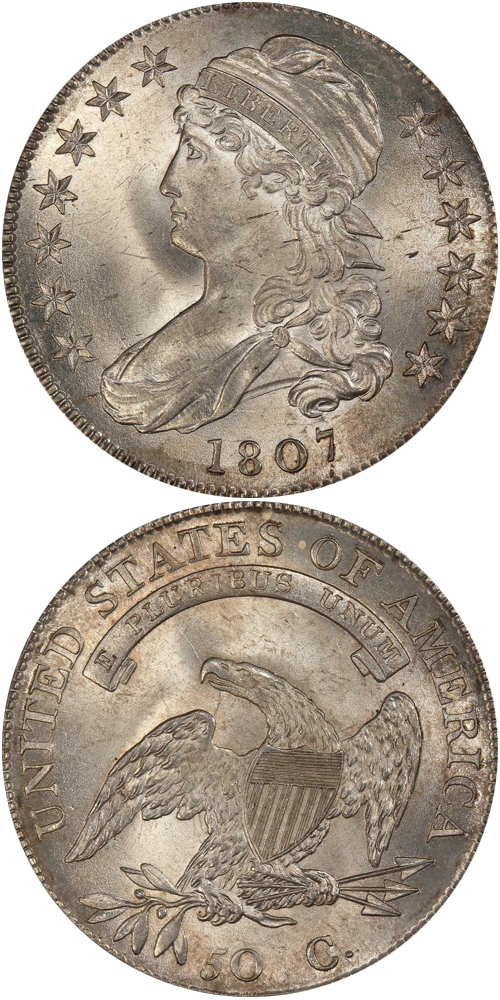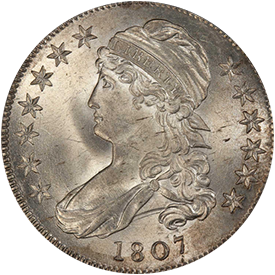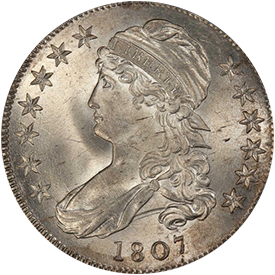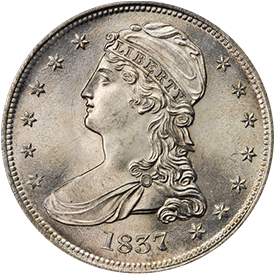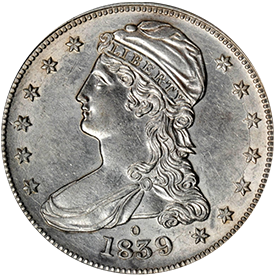In 1807, John Reich’s Capped Bust design replaced the earlier Draped Bust motif, on the half dollar, and over the next eight years, that design would be adopted on the dime and quarter as well. The half dime would have to wait until 1829 when production would resume for that denomination.
The first two years of issue of this type (1807 and 1808) featured a slimmer portrait of Miss Liberty and the eagle on the reverse. In 1809, the portraits were remodeled giving Liberty a heavier, more mature look, but his change is not considered a distinct type by most collectors.
For the next 25 years or so, Capped Bust halves were struck in high quantities and following the suspension of silver dollar coinage in 1803, the half served as a unit of account between banks. These trades between banks meant that many coins remained in bags, and received relatively little wear. As a result, there is a high supply of Capped Bust halves in VF, XF and AU condition available on the market today. Like Morgan Dollars, a high and relatively inexpensive supply results in a large number of collectors drawn to the series, so interest in these coins by die variety is intense.
In 1836, with the inauguration of steam-powered presses, the lettered edge seen on halves since 1794 was abandoned, and replaced with a reeded edge. The diameter was reduced as well from 32.5mm to 30mm. Two varieties of this reeded edge type were made ¬– the first indicated the denomination as “50 CENTS” at the bottom of the reverse. In 1838, this was changed to read “HALF DOL.” 1838 also saw the issuance of the first halves struck at the New Orleans mint. Only 20 pieces were struck, resulting in one of the major rarities in silver U.S. coinage.
As stated earlier, Capped Bust halves, and for that matter, all early pre-1839 halves enjoy a devoted following in the market. Al C. Overton’s 1967 publication of Early Half Dollar Die Varieties 1794-1836 ignited a great deal of interest in collecting these by die variety, and the Bust Half Nut Club remains one of the more active organizations devoted to a series of U.S. coins.
